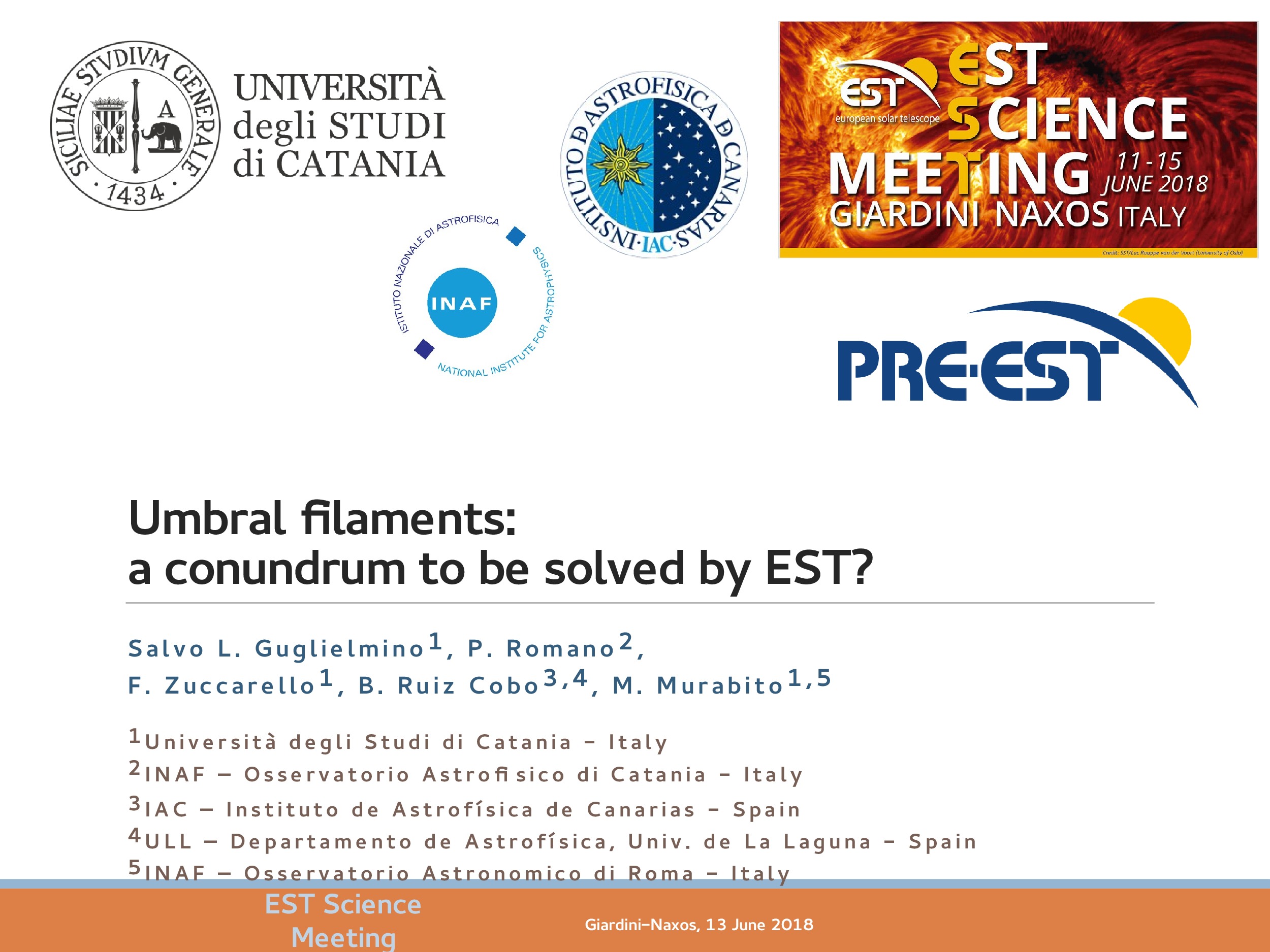Main category
Natural Sciences (Astrophysics and Astrononmy)
Abstract
Recent observations have shown the presence of bright filamentary structures that intrude sunspot umbrae, different in morphology, evolution, and magnetic configuration from light bridges that are usually observed in sunspots. Such structures have been called umbral filaments (UFs). In this context, we characterise an UF inside the umbra of the big sunspot in active region NOAA 12529. We analysed high-resolution observations taken in the photosphere with the spectropolarimeter aboard the Hinode satellite and in the upper chromosphere and transition region with the IRIS telescope. These observations were complemented with data from the Solar Dynamic Observatory satellite and from the INAF-OACT equatorial spar to study the evolution of this structure. The maps of the vertical component of the photospheric magnetic field indicate that a portion of the feature has a polarity opposite to that of the hosting sunspot. Furthermore, in the entire UF the horizontal component of the magnetic field is about 2500 G, substantially stronger than in the surrounding penumbral filaments. In the upper atmospheric layers, the UF is co-spatial to one of the footpoints of a small filament, which appears to be rooted in the sunspot umbra. Therefore, we have interpreted the UF as the photospheric counterpart of a flux rope touching the sunspot and giving rise to penumbral-like filaments in the umbra. New observations from the photosphere to the corona with higher spatial resolution, like those which will be provided by EST, are required to shed light on the nature of these structures.
Do you have problems viewing the pdf-file? Download presentation
here
If the presentation contains inappropriate content, please
report the presentation. You will be redirected to the landing page.
